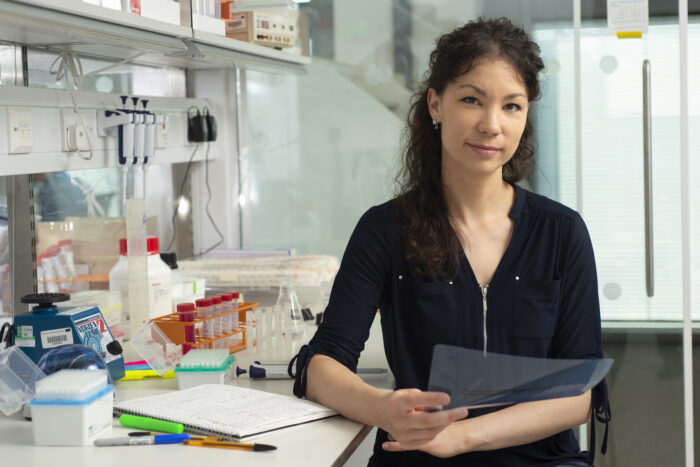
The LMB is delighted to announce Ana Tufegdzic Vidakovic as a new Group Leader in the PNAC Division, where she will continue her work on regulation of transcription in the context of DNA damage.
Our DNA is constantly receiving damage, which presents a major roadblock to the process of gene transcription and causes stalling of the enzyme RNA polymerase II (RNAPII) that produces the mRNA transcript. Several pathways are known to resolve stalled RNAPII, including degradation of RNAPII or transcription-coupled DNA repair, but a mechanistic understanding is lacking.
Activation of these pathways on normally active RNAPII would be detrimental to normal cell function, but it is similarly not known how stalled RNAPII is recognised. The starting goal of Ana’s group’s research will be to determine how stalled RNAPII molecules are detected and then dealt with.
Ana obtained her first degree at the University of Belgrade, before moving to the CRUK Cambridge Institute for her PhD. During her PhD she attended a talk in which a mention of transcription-coupled DNA repair inspired the direction of her postdoctoral research with Jesper Svejstrup’s group at the Francis Crick Institute. There she discovered how a single post-translational modification on RNAPII can regulate the cellular response to DNA damage inflicted by UV light. Her findings inspired further questions that she aims to answer with her group at the LMB.
“I couldn’t imagine a better place to start my own lab than the LMB; it is a dream come true. This is the place where the molecular mysteries of life are unravelled and I am absolutely thrilled to be a part of it.”